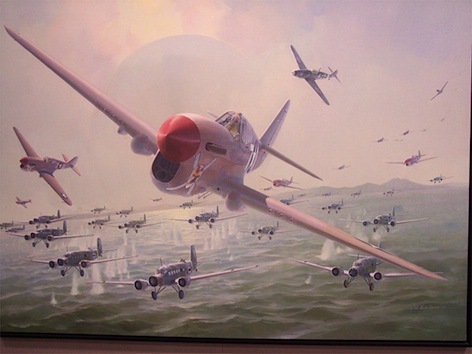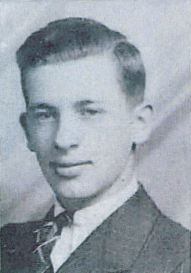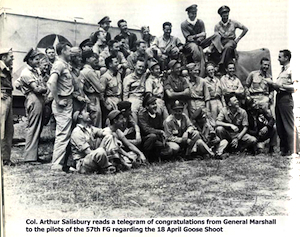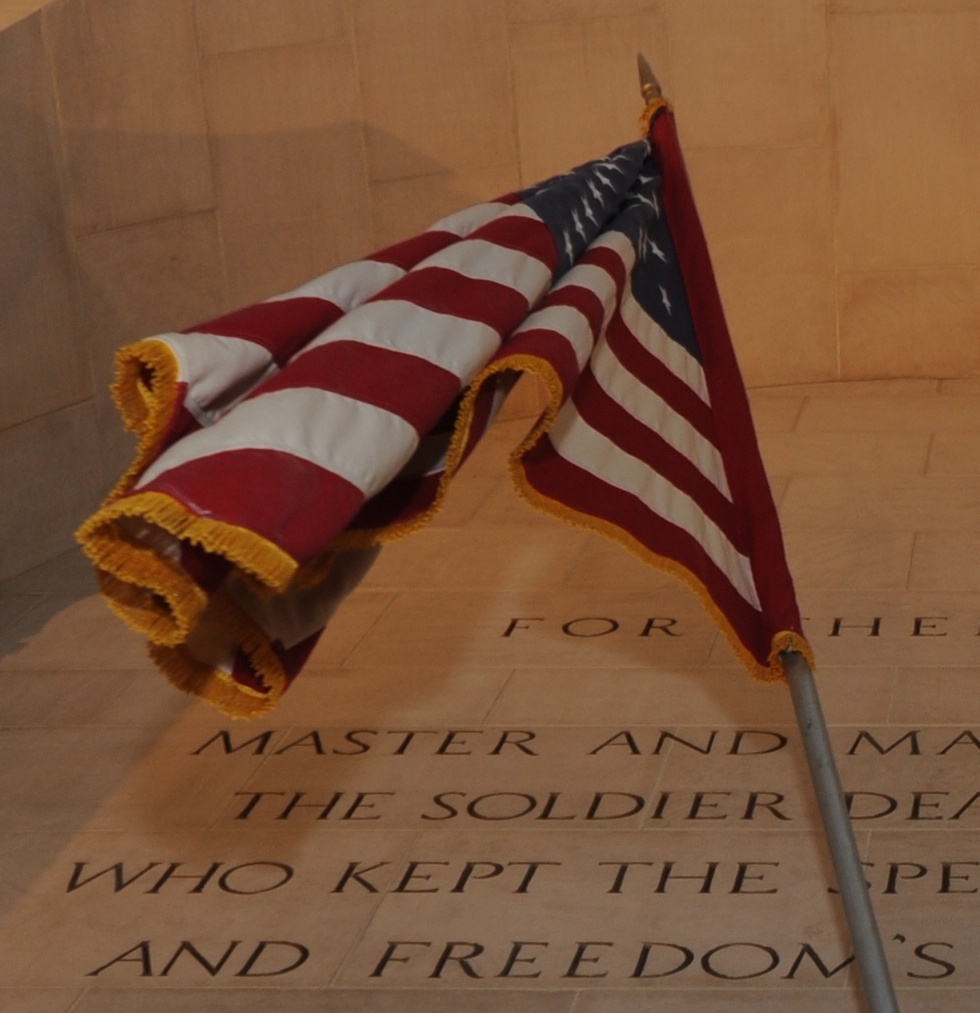
"Goose Shoot" battle painting by Keith Ferris.
AMES, Iowa – An Iowa State University Veterans Day memorial tribute to former students who died in military service will include a Woodbury man who died in World War II.
Maurice Raskin and four other former students who died serving in a war zone will be honored during Iowa State's Gold Star Hall Ceremony, 3:15 Tuesday, Nov. 11, in the Memorial Union Great Hall. The ceremony is free and open to the public.
Former students are eligible for name placement in the Gold Star Hall — the war memorial in the university's Memorial Union — if they graduated from or attended Iowa State full time for one or more semesters, and died while in military service in a war zone. As names become known, they are added to the wall and the soldiers are remembered in the university's annual ceremony.
A life remembered

Maurice Raskin was born in Woodbury in 1919, and attended high school in Sioux City. He was part of a meatpacking family that had survived the depression and prospered in the years after World War I. In the fall of 1938, he attended Iowa State, starting classes in the pre-veterinary program.
In February 1941, Raskin enlisted in the Army Air Force, and later was assigned to the 64th Fighter Squadron, 57th Fighter Group.
In October 1942, the 57th Fighter Group officially began combat operations as a formation. The group took part in the Battle of El Alamein in North Africa. As part of the Ninth Air Force, they supported the Commonwealth Eighth Army's drive across Egypt and Libya, escorting bombers and flying strafing and dive-bombing missions against airfields, communications and enemy troop concentrations. The unit participated in the battle of Pantelleria and the conquest of Sicily in the summer of 1943.
In April 1943, during an aerial battle over the Gulf of Tunis at Cape Bon, the group destroyed approximately 74 enemy transport and fighter aircraft, while an equal number crash landed. The 57th lost only six aircraft in this melee, known as the 18 April 1943 Goose Shoot or "The Palm Sunday Massacre." Their action broke the Germans' aerial supply line and they surrendered Tunisia 30 days later.

Gen. Marshall's telegram about the Goose Shoot is read to pilots of the 57th FG.
The 57th supported the British Eighth Army's landing at Termoli and subsequent operations in Italy, being reassigned to Twelfth Air Force in August 1943. It flew dive-bombing, strafing, patrol and escort missions.
It was on a strafing mission in October that Raskin courageously died for his country.
In a firsthand account of Oct. 20, 1943, Brig. Gen. Michael C. McCarthy, a fellow pilot in the 57th Fighter Group and tentmate of Raskin's, describes that day in his memoirs as follows.
We briefed an armed reconnaissance mission before dawn hoping the Foggia area would clear and stay clear. Our weather reconnaissance reported flyable weather within 40 miles of the base and a solid overcast to the north with tops at 10,000 feet. We launched three sections of four P-40s with bombs headed north climbing above the clouds looking for breaks in the overcast as we penetrated deeper into enemy territory.
After 30 minutes, we found occasional breaks that revealed the Italian coastline on the Adriatic Sea. Within minutes through a larger hole in the clouds, we recognized the port city of Ancona with its distinctive road and rail complex leading to the dock area. Our timing was fortunate. A train with a double locomotive, heavily loaded flat cars, and many freight cars was moving slowly out of the station south toward the Gustav line. We knew we had surprised the Germans because we attacked without the usual intense 88-mm anti-aircraft fire.
Our lead section cut tracks on both ends precluding further movement of the train. My section concentrated on the double locomotive, destroying both boilers. The others strafed the freight cars. I followed behind the last element on their right side so we could attack anything that was missed.
As I rolled in, the P-40 ahead flying low and fast was about to pass over the freight car he had been strafing when a tremendous explosion erupted. I was just far enough away to avoid the center of the burst but my airplane was blown straight up flipping end over end for what seemed an eternity. I reached relatively smooth air where I regained control. The engine was running and control response was normal. We rejoined out to sea and discovered one of us missing. Moe Raskin had been the P-40 directly over the center of that explosion.
The railroad station was between two low hills, 600–800 feet in height. A RAF reconnaissance pilot managed to take damage pictures the next morning. The entire area was flattened. Those two hills with the station had disappeared. There was no sign of Moe’s P-40 which had probably disintegrated. My airplane was full of holes but I got back to base again with another aircraft that had flown its last mission.
I wrote Moe’s family in Sioux City, Iowa. Because of wartime security, I did not describe the details of his final mission but talked about his tent mates, our friendship, and the fun we had together.
Although Raskin has a memorial stone in Sicily-Rome American Cemetery, Nettuno, Italy, his body was never found. He was 24 years old.

